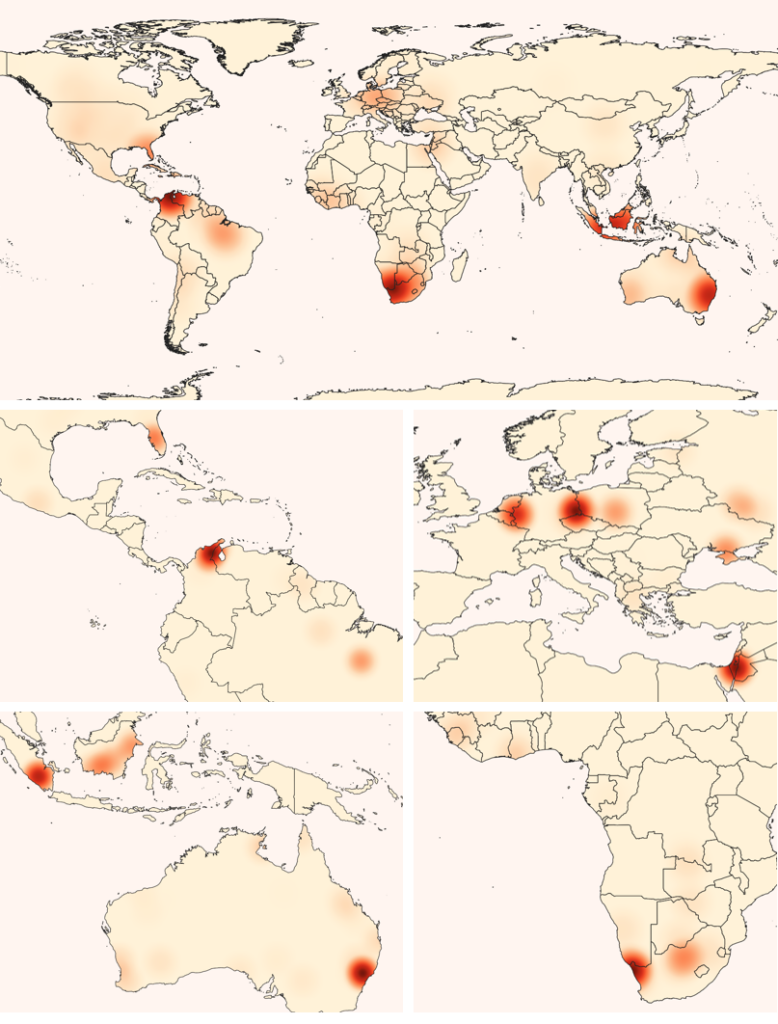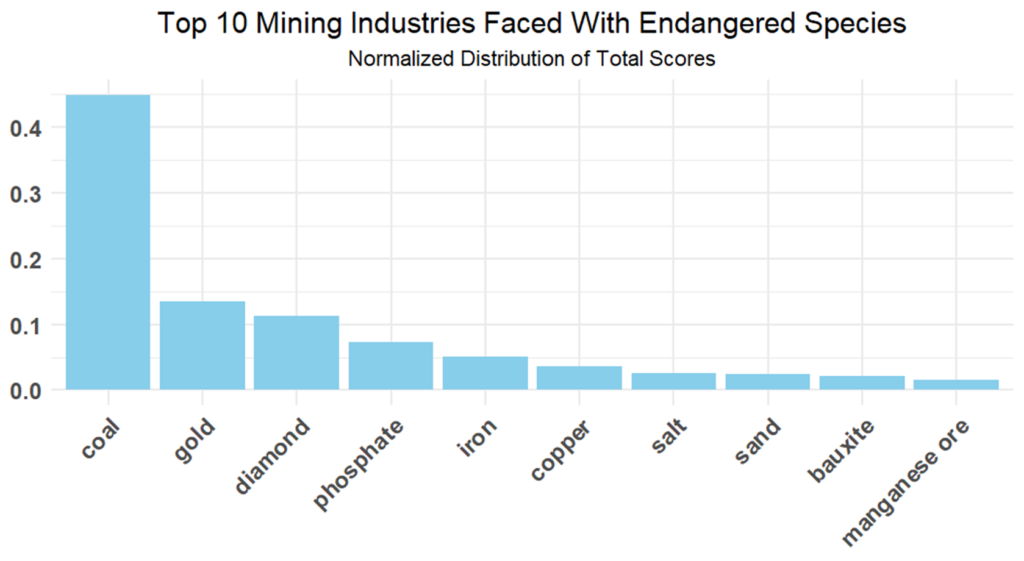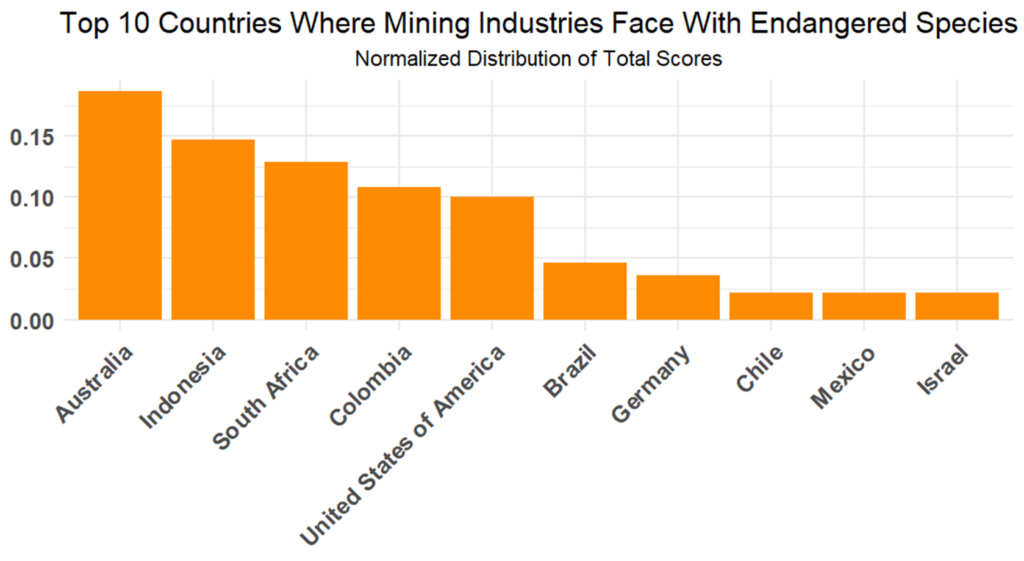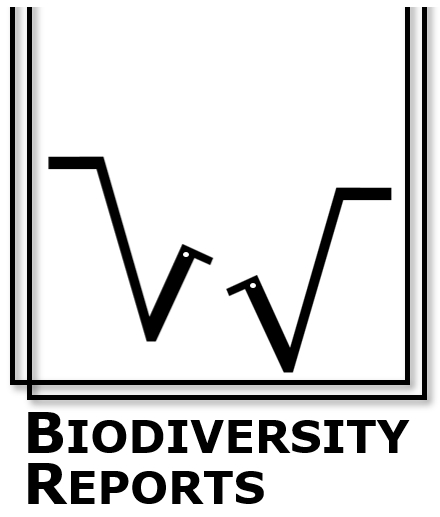Mining activities provide critical resources for global economic growth, powering industries such as construction, electronics, and renewable energy. In 2023, the global mining market was valued at approximately USD 1.8 trillion, with projections estimating its growth to USD 2.4 trillion by 2030, driven by the rising demand for metals like lithium, cobalt, and nickel essential for the energy transition (Statista, 2023). However, this economic expansion comes at a cost: mining often overlaps with regions rich in biodiversity, including habitats of threatened species.
A recent global analysis highlights that over 80% of mining areas lie within biodiversity hotspots, regions recognized for their exceptional biological value and high vulnerability (Sonter et al., 2023). In many cases, these areas host species listed as “threatened” on the IUCN Red List due to their restricted ranges and dependence on undisturbed habitats.

Mapping Mines that Host the Most Threatened Species
Using publicly available datasets, we conducted a global analysis to identify mining sites that overlap with habitats of the highest number of threatened species. This assessment is based on IUCN Red List categories for threatened species: Critically Endangered (CR), Endangered (EN), and Vulnerable (VU).
Our findings reveal significant geographic disparities in risks and opportunities associated with threatened species. The following regions host mining sites with the greatest overlap with these species’ habitats:
- Americas: Colombia, Venezuela, Brazil, and Florida (USA).
- Africa: South Africa and Namibia.
- Europe: Benelux (Belgium, Netherlands, Luxembourg), Germany, Poland, and Ukraine.
- Middle East and Asia: Israel and Indonesia.
- Oceania: Australia.
These areas represent critical intersections between biodiversity conservation and mining operations. The findings underscore the urgent need for regionally tailored strategies to mitigate impacts on biodiversity, integrate conservation priorities into mining practices, and align with global sustainability goals such as the Convention on Biological Diversity (CBD) and the Sustainable Development Goals (SDGs).


The top mining countries—Australia, Indonesia, South Africa, and the USA—dominate global extraction, significantly impacting land and biodiversity. Coal mining is the most influential, with a major environmental footprint. Gold and diamond mining also have notable impacts, though less than coal. Other activities like phosphate, iron, and copper mining, while smaller in total, remain important to global industries.
Conclusion
The mining industry, with Australia, Indonesia, South Africa, and the USA as the top producers, plays a significant role in global resource extraction, but also in environmental degradation. These countries host major mining hubs, with operations spanning coal, gold, diamonds, and other minerals. Coal mining, representing nearly 45% of the global total score related to threatened species. It is crucial in energy production but faces increasing scrutiny due to its environmental footprint, especially in nations like Australia and Indonesia.
Gold and diamond mining follow, contributing around 13% and 11%, respectively. While their environmental impact is smaller than coal’s, concerns about mercury contamination, deforestation persist. Other mining activities, such as phosphate, iron, and copper, contribute moderately to the total mining footprint. These materials are critical for agriculture (phosphate) and electronics (copper), but their extraction leads to significant environmental challenges, including soil contamination, water pollution, and biodiversity loss.
The Corporate Sustainability Reporting Directive (CSRD) and Taskforce on Nature-related Financial Disclosures (TNFD) are increasingly shaping how mining companies report their environmental impacts. The CSRD mandates comprehensive disclosures on environmental, social, and governance (ESG) factors and the TNFD framework encourages companies to assess and disclose nature-related risks, supporting efforts to integrate biodiversity considerations into financial decision-making.

